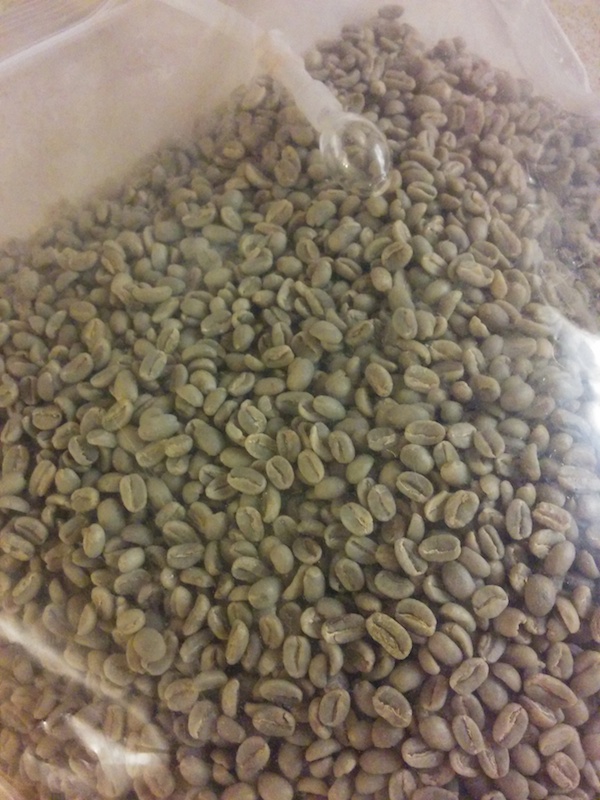Preconditioning of green coffee may be one of the few small frontiers in specialty coffee where opportunity for innovation exists.
We’ve seen some interesting exploration along this front recently, including an analysis by importer Sustainable Harvest on what might be called unintentional preconditioning — how bag types used in green coffee storage actually affect flavor. Then there’s Modern Times, the brewery/roastery in San Diego that has been working to perfect green coffee conditioning in spirits barrels for use in beer or for standalone roasted coffees. Ceremony Coffee Roasters of Annapolis, Md., and Chicago’s Dark Matter Coffee are recognized as two of the front’s pioneers.
Now comes Compelling & Rich, the Los Angeles-based roaster that has begun experimenting with herb- and tea-conditioned coffees, incorporating ingredients like fresh chai tea, oolong tea and cannabis.
“I actually first thought of doing something like this based on tea-smoked duck, a Chinese dish that adds complex tea notes by roasting tea with the meat,” Compelling & Rich Founder and head roaster Kian Abedini recently told Daily Coffee News. “I knew purposely adding flavors to coffee through influencing the green storage was possible, due to the nature of raw coffee itself and the work of roasters like Dark Matter and Ceremony.”
Abedini says initial feedback and sales of his first conditioned coffees have far exceeded expectations, and that he plans to introduce a new conditioned coffee each month.
In a spirit of industry collaboration, he shared with us the basics of his method. (We can’t say this method hasn’t been tried before. If it has, we’re not aware of it in commercial applications.)
“The process for adding complexity to the coffees through conditioning is 100 percent natural,” says Abedini, who also recently opened a creative coffee drink bar in downtown L.A. called Frequency. “First, I use a vaporizer to heat up the teas or herbs to their smoke point; then add the resulting vapor to a sealed plastic bag containing the green coffee; then let it absorb for a period of time depending on the coffee and the temperature smoke point of the teas/herbs.”
Coffee is then roasted, involving a proprietary step that Abedini is not as excited to share with the world. “I need to keep that a company secret,” he says. “But in general, the complexity is added to the back end of the flavor profile, as well as the aroma. The roasting is still the predominant influence on the cup, and defects would be noticeable.”
Abedini stresses that the conditioning method is in no way intended to mask defects or impart flavor to coffees that would be otherwise uninteresting. He’s using coffees from C&R’s small, rotating line — coffees that are also roasted and sold without preconditioning.
With 5-pound batches, Abedini is only preconditioning the coffees for 5 to 10 minutes prior to roasting, seeking a sweet spot and also minimizing the amount of time required for each batch.
Says Abedini, “I love the fact that this is an interesting, organic way to add complexity to a coffee without diminishing the impact proper roasting has.”
Nick Brown
Nick Brown is the editor of Daily Coffee News by Roast Magazine.
Comment
2 Comments
Comments are closed.








It’s some of the things like this that make me believe that a lot of people are simply bored with really good coffee.
Several years ago a winemaker and I soaked green coffee in port for several weeks dried on screens and roasted. Added a complex quality to the blend, but tricky to roast because of the sugar.